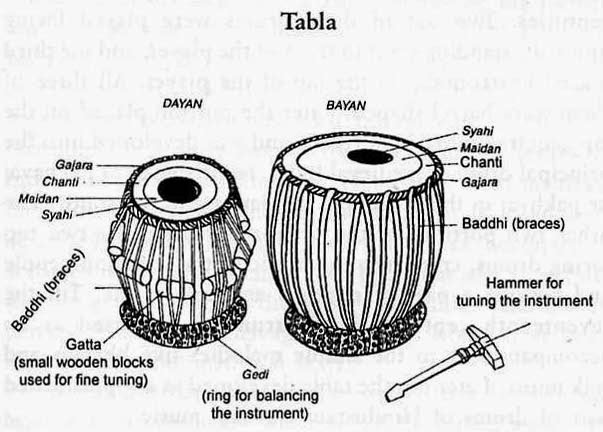Rhythm plays a primary and active role in Indian classical music. The Tabla is one of the important and famous worldwide instruments in the category of the Indian drums, which falls into the category of Gaiaphones i.e. instruments related to earth and solid in nature. It is the queen of drums and it is said that when somebody knows how to play it, then he can play any other drum or percussion instrument of the world.
Renowned Tabla Artiste:
 |
| Ustad Chander Mohan |
Ustad Chander Mohan has been playing Tabla for the last 50 years. He got his lessons in Tablain traditional system of “Guru Shishya Prampra” i.e. disciple and teacher from the renowned Tabla wizard late Pandit Hira Lal Ji, who belonged to Delhi Gharana, .
He has learnt Tabla for more than 25 years. He has been trained by his teacher in other Gharanas also like ‘Ajrara, Purab and Punjab. One of his fellow students is Ustad Miya Shaukat Hussain Khan Sahib from Pakistan who has a famous disciple Ustad Tari Khan is.
Ustad Chander Mohan has performed Tabla with all the great artistes of India and Pakistan such as Ustad Villayat Khan (sitar instrument player), Ustad Rais Khan(sitar instrument player), Ustad Amjad Ali Khan(Sarod instrument player), Pt. Ram Narain (sarangi instrument player), Ustad Sultan Khan(Sarangi instrument player), Pt. Hari Prasad Chaurasi(flute instrument player), Pt. Bhim Sen Joshi, Pt. Rajan & Sajan Mishra(Indian classical vocal singer) , Smt. Girija Devi(vocal singer), Ustad Salamat Ali Khan & his son Ustad Shafakat Ali Khan(vocal singer), Pt. Durga Lal(Indian Kathak dancer), Pt. Pratap Pawar(Kathak dancer), Pt. Charan Girdhar Chand (Kathak dancer) and Smt. Shobhana Naarain (Kathak).
Ustad Chander Mohan has been playing Tabla with king of Ghazal, Ustad Mehandi Hassain, Ustad Gulam Ali Khan, Farida Khanam, Ahmed Hussain & Mohd. Hussain, Hari Harian, Chandan Das and Ustad Nusrat Fateh Ali Khan.
Ustad Chander Mohan has performed across the world i.e Middle East, USA, UK, Canada, Germany, Holland, Belgium, Sweden, Denmark, Switzerland, France, Norway, Caribbean countries - Trinidad & Tobago, Guyana etc. .
The Government of India under the Ministry of Foreign Affairs (ICCR) has announced his name as Indian icon to promote Indian classical music among youths in Suriname (Paramaribo), South America for three years as a Tabla teacher-cum-performer. He had groomed a number of Tabla students in Suriname.
MUSIC OF LOVE
.jpg) |
| With Ustad Allaha Rakha Khan and Ustad Sultan Khan |
%2Bat%2BSPIC-MACAY.jpg) |
| Ustad Chander Mohan Pandit Ram Narayan Ji |
.jpg) |
| With Ustad Amjad Ali Khan and Pt. Ravi Shankar |
.jpg) |
| With Pt. Charan Giridhar Chand - Kathak Dancer |

.jpg)
%2Bat%2BSPIC-MACAY.jpg)
.jpg)
.jpg)
.jpg)









